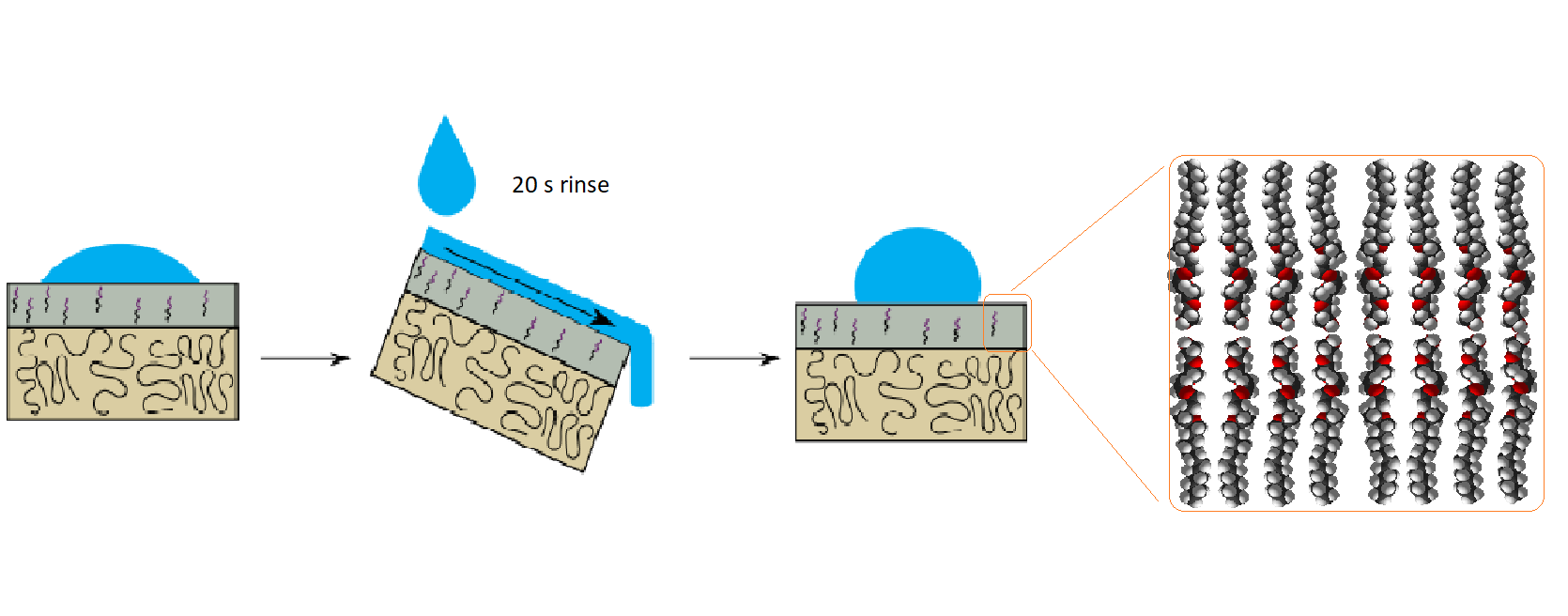Water-soluble nonionic surfactant, pentaethylene glycol monododecyl ether, C12E5, spontaneously blooms to the surface of spin-cast hydrophobic polyiso-prenes, generating hydrophilic surfaces. This system represents a simple model for hydrophilic chemical modification of rubbery polymers yet demonstrates surprisingly rich, complex and unexpected behaviour. The ver-tical depth profiles were quantified using neutron reflectometry (NR) and deuterated surfactant, and the surface properties were characterized using con-tact angle analysis and atomic force microscopy (AFM). Despite the low surface tension of the toluene solvent used in film preparation and the low surface en-ergy of the PI matrix, NR depth profiles revealed clear evidence of surfactant segregation. This surface layer was typically thicker than a monolayer, but incomplete, yet was remarkably stable with respect to dissolution, even when exposed to hundreds of thousands of times the volume of water required to dissolve all the surfactant on the surface. Despite the apparent resistance to removal from the surface, water exposure does alter the subsequent wettabil-ity of the surface, with a hydrophilic-to-hydrophobic transition occurring after rinsing. Complementary AFM images of these C12E5 / cis-PI films showed unexpected strand-like features on the surface of the film, which we attribute to a non-uniform lateral distribution of some of the surfactant. This surface structure becomes more evident after rinsing, and it appears that there are two distinct populations of surfactant on the PI film surface. We conclude that some of the bloomed surfactant exists as layers, which are relatively inert with respect to rinsing or surface modification, and some is laterally inhomogene-ous. This latter population is primarily responsible for surface wetting be-havior, but is not detected by specular NR.

